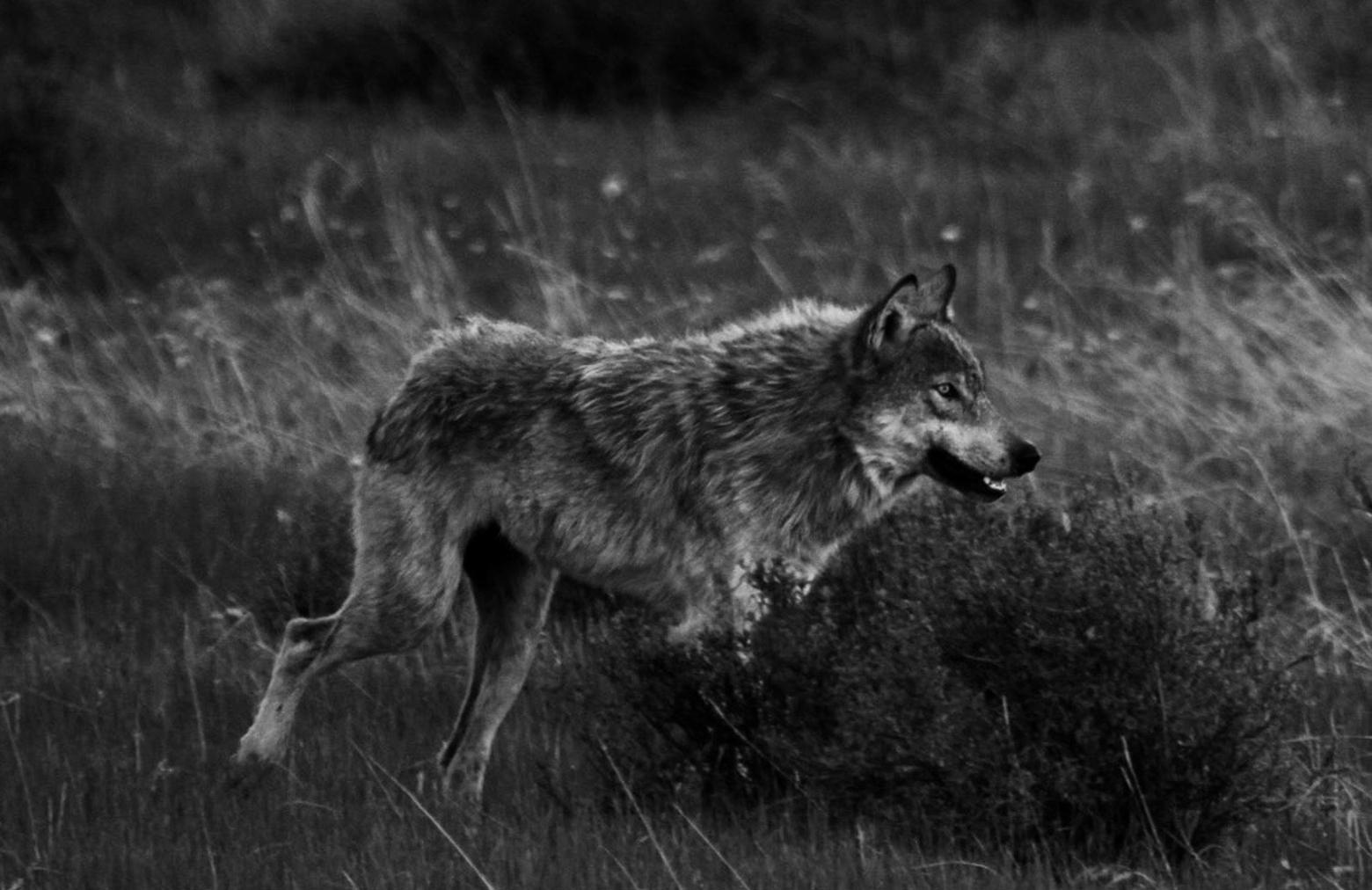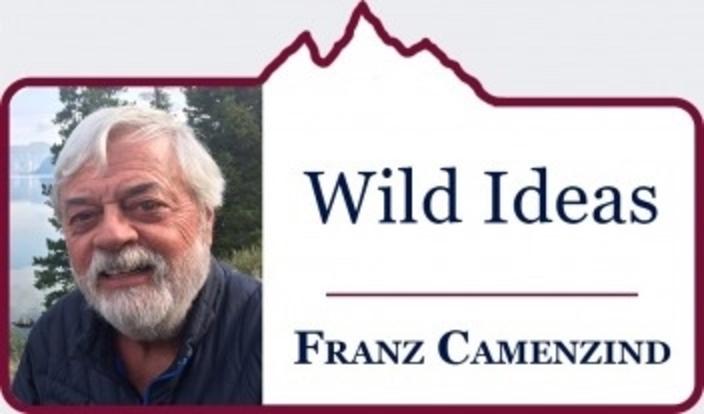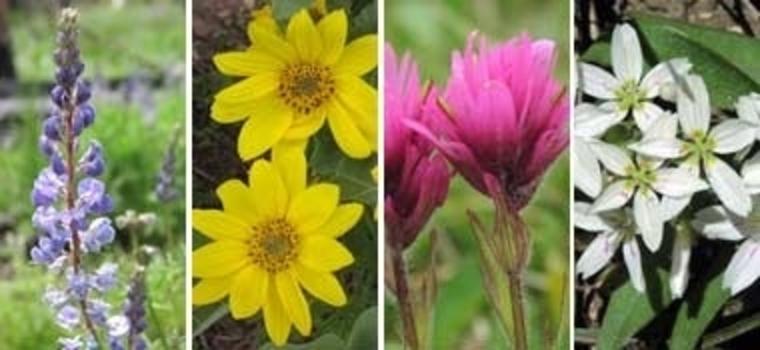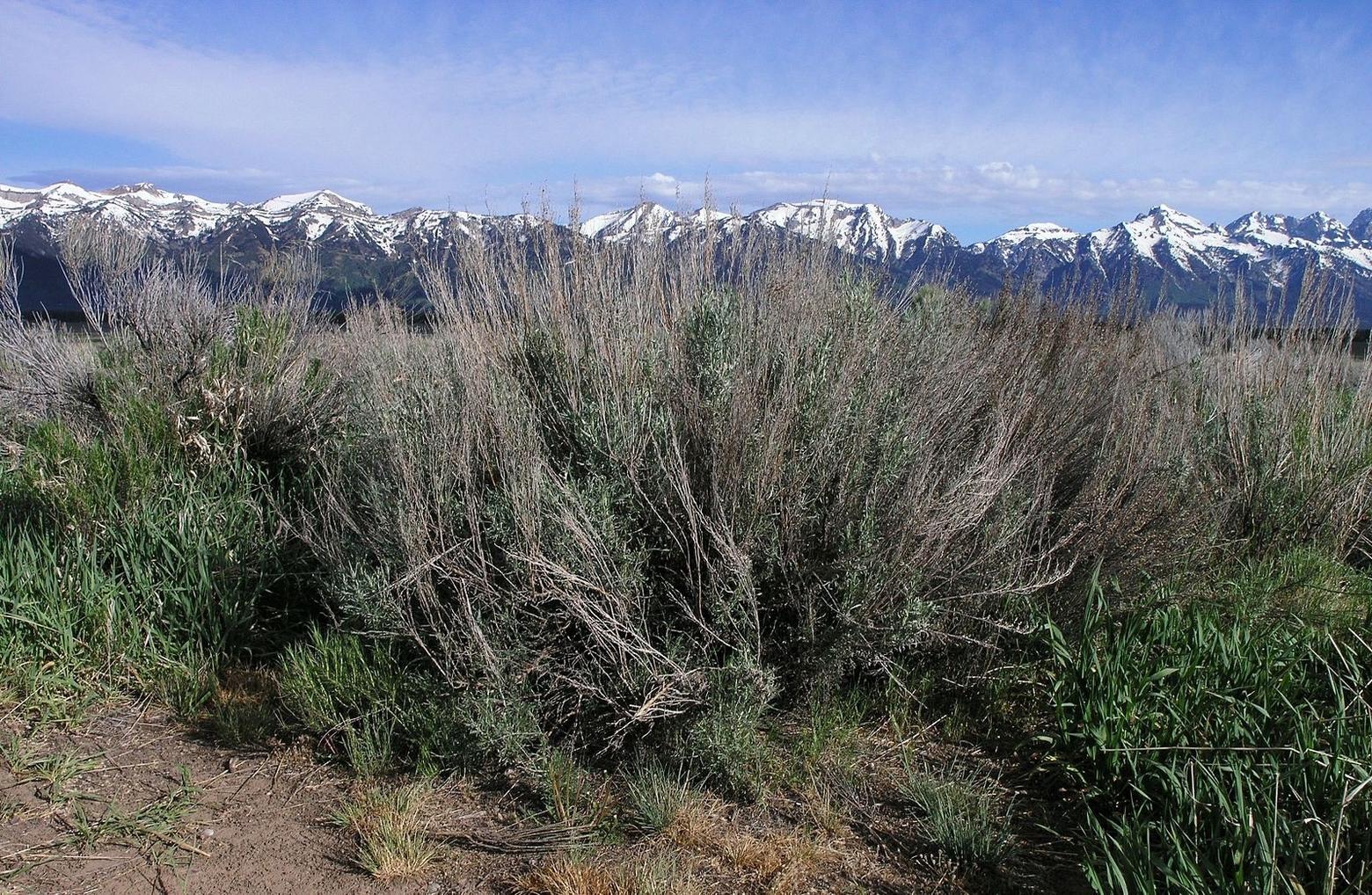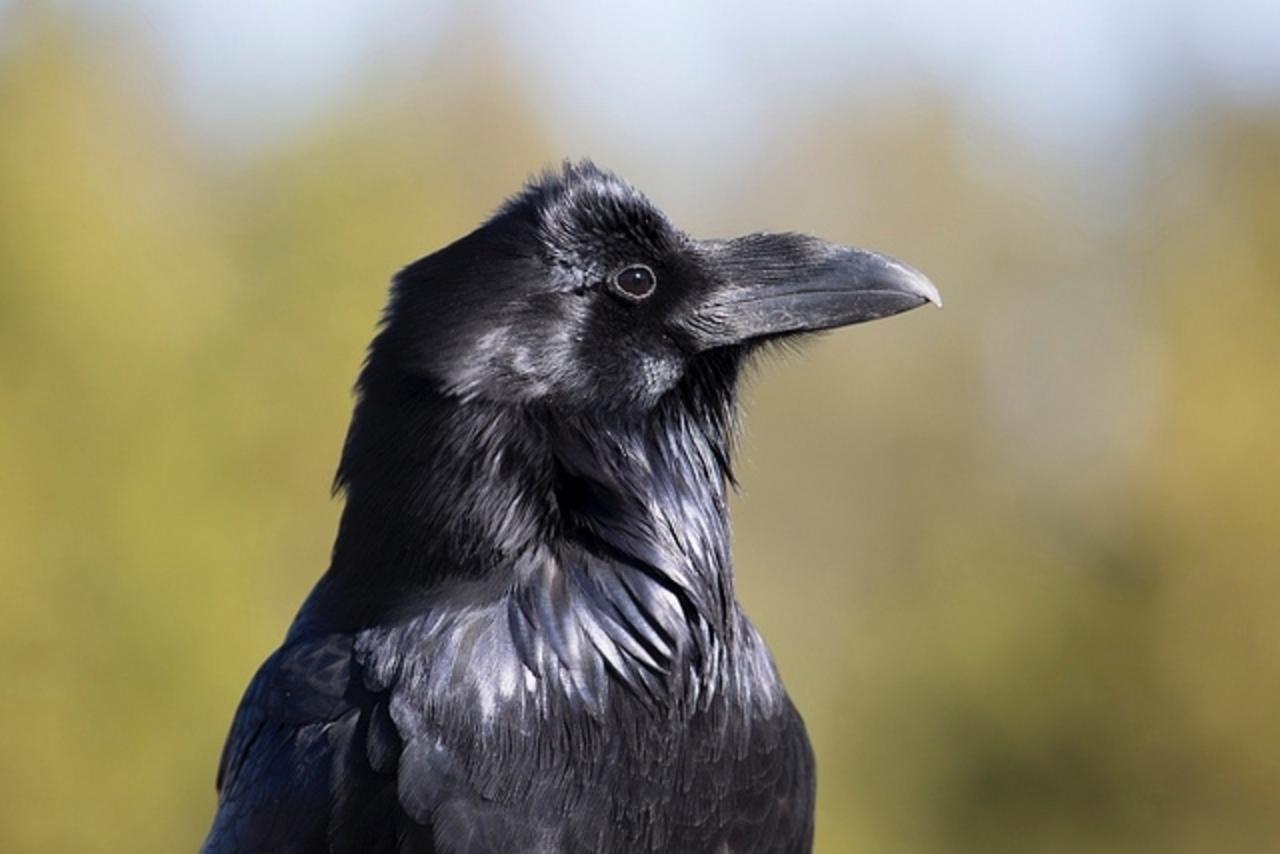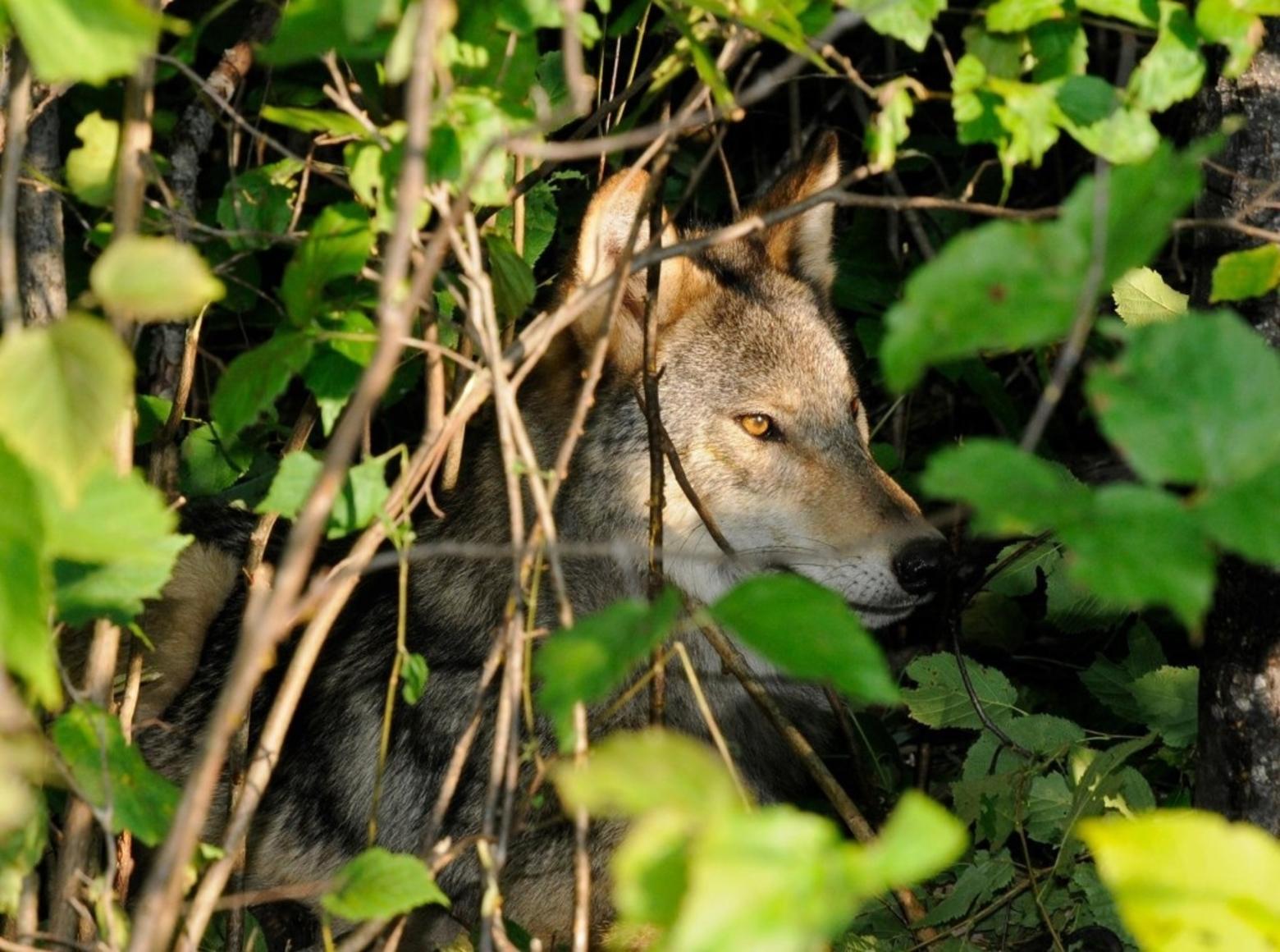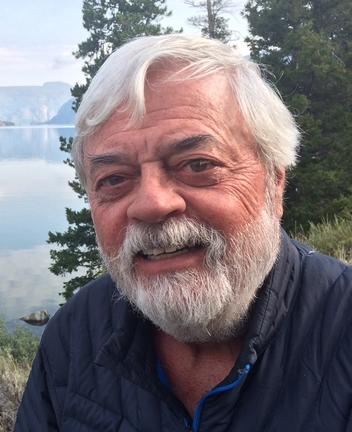Back to StoriesA Raven's Call Leads To A Hidden Lobo
August 6, 2018
A Raven's Call Leads To A Hidden LoboDuring a hike in the mountains, what started with a few caws led to the discovery of a stealthily-observant wolf
The late May morning dawned with a perfect lapis lazuli sky set with still air and a light frost on the roof—a beautiful morning promising the best day of this year. The seasons have indeed changed. I knew that I was going to go for a drive in Grand Teton National Park and then a hike.
The day was so peacefully wonderful that I drove slowly through Moran Junction and paused at the Oxbow bend of the Snake River. The Tetons were reflecting near-perfectly in the water. I stepped out of the car and felt the place, the freshness in the air, the soft breath of the day, barely enough movement to buff the water's surface. I couldn't stay long. I needed to get moving by foot and this was not the place to begin my walk.
I drove a bit longer and pulled off onto a dirt side road, parked and set off. I was immediately overcome by the delicate nature of this place. Before me spread a rumpled carpet of fragile life, stretching for miles, bending and twisting its way up and over countless glacial divots and pits.
I always feel like a heathen when walking this land, trudging as I was, through God's cathedral in hard shoes, carrying myself so arrogantly above the soul of this place. Here it would be so easy to walk, oblivious to the land below where life exists in miniature.
Often when I walk this part of the valley I remove my shoes so as to tread more gently on the land. Today I could not do that. I felt badly, but after a winter of boots and shoes, my feet were not yet hardened for such a walk. Ironic, I must become hardened to tread softly.
This land's spring beauty exists in Lilliputian scale. It requires looking where you walk. Life is under every footstep.
The place was exploding with energy and the desire to create the next generation. The ground was flowered with a delicate mosaic carpet of color. Most blooms were smaller than my thumbnail. All were suspended on thread-thin stalks, few reaching above my ankles. It would be easy to miss this immaculate beauty if one were just walking to a destination.
Into The Untamed Garden
I moved deliberately and with purpose, but with what must have appeared like a street drunk with my swerving stride so necessary to avoid the sagebrush and yet not land each footstep atop a flower. It was difficult not to stop and pause in wonder at each new ground pattern- lichen covered river rocks rounded from centuries of grinding in the glacier's slow movements. Rocks of every hue, pastels ranging from near white to coral pink and shades of gray blending to black. Mosses and succulents hugging the ground, wrapping around the rocks' smooth edges- and then the flowers.
I wanted to stop at every new arrangement of rock, each bouquet of flowers, but knew that if I was to explore I would have to keep pace with the horizon. Walking here takes half again as much time as walking on a wilderness trail. It deserves that respect.
This is my favorite place. I come here to walk. I come here to see, to take in the land, its life. I come here to worship. It is my most peaceful garden. I have never walked here but not to have been soothed, calmed and positioned back into proper perspective.
It is easy to avoid tall plants when walking but more challenging to avoid the beauty found here at ankle height. Patches of yellow bell, each flower humbly nodding from between narrow-lined vibrant green leaves were surrounded by patches of delicate shooting stars with their deep pink petals pulled back proudly exposing their yellow and black sex parts. Nature has no shame when viewed from her perspective!
Wildlife Extravaganza
Sun-bright mountain dandelions blooming just inches above the ground and looking so much more appropriate here than do their cousins in my home's lawn.
I walked and stopped often to take in the beauty at ground level. Lying on my stomach I examined in detail the miniature landscape of banana-yellow Oregon grape blooms standing proudly against the many shades of gray, smooth river rocks.
On a ridge, three buffalo bulls aligned themselves perfectly with the snow-capped Grand Teton—a postcard Jackson Hole scene.
Around the next ridge top 11 elk cows grazed, again with the Tetons as their backdrop. I have witnessed these scenes before but never tire of the story they tell; of life and landscape so peacefully being as one.
The landscape was uniformly dry except for a few north facing, brushy slopes and some of the very lowest beds between the ridges. Some still held shallow pools from the winter’s snow melt. This is the sixth year of drought and it is taking its toll. When these isolated pools dry up, many of the elk and buffalo will move away, toward the nearby lakes and river bottom.
Around the largest pool I found a pair of wolf tracks imbedded in the soft mud. Not fresh, but from this spring. One set considerably larger than the other— a male and female perhaps?
I followed them around the pool and came upon the boney remains of a bull elk that appeared to have died this spring. Its antlers had been shed but the hide on the leg bones was still pliable and smelt of decay. I checked the teeth and this animal had to be well over 15 years of age, with teeth worn short and flat. This bull was past its prime. A natural mortality–perhaps its fate closed by the jaws of wolves. Life goes on for some while being extinguished within others.
I kept walking, deciding to go all the way to a distant ridge, one of many left by the retreat of the last glacial period that melted away some15,000 years ago.
All of Jackson Hole’s valley floor is strewn with the remnants of glaciation– whether the central pot holes, the moraines embracing the necklace of lakes at the base of the Tetons or the tree-covered ridge before me which was now my destination.
The glaciation of the northern end of the valley is the most recent and therefore the ground is most porous; a loose conglomeration of rocks, gravel, and sands, a formation that holds very little water for the plant's needs. This, and the absence of ages-old topsoil, makes this region a trying place for anything but the most hardy to sustain even a meager living.
This sage-covered land is rarely visited. Tourists and residents alike cast their eyes to the mountains and direct their activities to the deep canyons and rock walls. I understand and am thankful. Where I walk, this shallow sea of gray sage, rocks and flowers in miniature is a place of wildness in a hive of tourists. Today, as with every walk here, the place seems mine and mine alone.
I arrived at the base of the ridge and began my slow ascent following a rough trail cut deep into the dirt and cobble by countless migrating elk hooves. At the crest I found a perfect grassy clearing within the sage, one that simply begged me to pause, relax and "become one with the place." So I succumbed to the sirens’ call of the warm air filtering through the nearby trees, the warm sun and the sights and smells of early summer. Peace, and nature’s quiet!
As good as this was, I could not spend more than half an hour here. I needed to continue my exploring. I didn't know the source of the urgency, but it was there and I resumed my trek. I moved toward the west, holding course just inside the tree line.
Walking was challenging with the web of fallen trees and undergrowth. Walking in America's arid West rarely becomes a stroll in the garden, be it sage, bitterbrush or fallen timber, it is always a circuitous route, but perhaps that's why I like it so much.
Walking the ridge for a few minutes I came to the remnant corridor of a long-abandoned utility line. Tall trees cut down decades ago being replaced with new growth. The earth healing itself after man's earlier assault. The swath now barely recognizable for what it was. My thought was to take the pathway back north and then continue my walk along the lower toe of the ridge.
Warning Cries From The Corvid Sentinel And Then...Canis Lupus
As I stepped cautiously through the thick new growth I became aware of a single raven calling. It burrowed through my mind for unknown minutes before I gave it due thought. For some reason still not clear, I stopped and listened and focused on that slow, simple one note cawing.
I couldn't see the source but thought it odd to have one raven calling so methodically, so slowly, but persistently, without variation. It occurred to me that there might be a carcass somewhere hidden under the trees, certainly something worth investigating. I turned toward the cawing.
Quietly, slowly, I moved deeper into the forest. Following the raven’s call. The visibility was not great; five, ten, rarely as many as 15 yards of forest floor was discernible. The forest was a maze of fallen logs, thick undergrowth and low hanging branches.
The raven continued its call; not sounding alarmed or agitated, but slowly repeating its one note refrain. And still out of sight.
Then a few yards away a shape suddenly formed behind the shrubbery. My first thought was bear. It was dark, lanky and big. But in the moment of second thought I knew it was a wolf! Not running, not trotting, just standing and then calmly stepping away in a quarter direction. Its muddy-gray cast blended perfectly with the earth, plants and shadows. It was not particularly striking in any one sense except for being a wolf. If it looked at me, I did not see its face nor feel its eyes.
It vanished as easily as it appeared. The raven stopped calling. The forest was silent but for the soft breath of the place, and my beating heart.
Now What To Do?
I stood in awe, wondering if what I had witnessed was real or imagined—a wolf or the product of a wishful mind. I knew it was real. I had just encountered a wild wolf; one without a collar, one never touched by human hands. It allowed the encounter. It knew I was in the forest. It had to know because in my circling to the place of our meeting I was clearly and completely up wind of even this day’s slightest air movements, and no human scent will escape a wolf's keenly sensitive nose.
After a minute of gathering my emotions I began walking a small circle around the spot where we met, thinking again that there could be a fresh kill or something there that had held the wolf during my approach. I found nothing but a forest quietly alive with wildness. Nothing was out of the ordinary.
I wanted to move in the direction of the wolf and follow my original course. But something caught my ear, a low, deep sound as if someone were gurgling a soft laugh. A sound like I have never heard before. It repeated itself several times but never loud enough to place it in a particular spot. Strange. I almost felt there was someone just out of sight, hiding in the forest, giggling at my wonder.
I wanted to move in the direction of the wolf and follow my original course. But something caught my ear, a low, deep sound as if someone were gurgling a soft laugh. A sound like I have never heard before.
I kept walking ever so slowly, meandering between the trees, bushes and fallen logs. In a few minutes I emerged into an opening on the side of a low knoll, and there on the ground before me was a large scat. No doubt that of a wolf, but several hours old as most of its surface was dull and dry with but a few edges shaded from the sun's shine still damp. It was black and consisted of hair, probably that of elk. And it smelled like that of a wild canid.
I have smelt many fresh coyote droppings during my eight years of researching these small cousins of the wolf. I knew this to be the output of a wild canine; there was no doubt. It is good to examine scat but wise not to sniff it too close because it can contain parasites.
The condition of the scat made me wonder, how long had this wolf been in the area, hours apparently. But why? Was there a den here? No pack has been reported in this area, although sightings from last year suggested that wolves do visit the area and this would be one of the best places to begin a family. Rounded knolls topped with wind-blown soils easier to dig, a canopy of trees for seclusion and elk present, at least during the warmer months.
I gathered my thoughts and resumed my meandering through the trees. I’d walked but a few paces when the wolf again appeared, standing not more than 15 yards away and behind some low hanging branches. This time staring directly into me. Its dull, even colored body broken only by a bandit’s black mask extending through its eyes and onto both cheeks. Its eyes were dark, not burning but distinct.
As before, the wolf did not appear alarmed or frightened, only inquisitive—or perhaps unimpressed. Its eyes focused on me, but without expression. I do believe my heart missed a beat or two, but I never felt threatened or in danger. As with the first encounter I knew two truths: if it had wanted to do me harm it would have done so long before I ever knew of its presence, and second, with the wolf so calmly occupying the area there were almost certainly no bears about. I felt safer here and now than anywhere else in the forest.
As before, the wolf did not appear alarmed or frightened, only inquisitive—or perhaps unimpressed. Its eyes focused on me, but without expression. I do believe my heart missed a beat or two...
After what seemed like minutes, but was surely only seconds, the wolf quietly walked away, again at right angles, and again it disappeared behind thick understory and low-hanging tree branches of its forest world. I turned and took a couple steps hoping to get another glimpse. But it had vanished, not to be seen again. I did not want to pursue and tarnish this precious moment.
How it could have disappeared from plain sight and so close is a secret only the wolf can tell.
This shared experience was given to me by the wolf. I was in his world and he was in control. If it had not wanted to be so near, not wanted to be seen, it would have remained out of sight- out of my sight. But for some reason, which shall remain the wolf’s secret, it presented itself to me. We shared this one tiny spot on earth for these two brief moments of infinite time. It was a gift given to me.
Engrossed in these thoughts, my ears slowly caught yet another sound new to me. A pure, deep and slightly wavering whistle. It seemed to come from some distance off, from where my walk in the forest began. I followed the call for a bit, but could never isolate its origin. The whistle was repeated many times and no matter where I moved it was always just "over there." Again it sounded like a sound made by a human, nothing like I have ever heard in the forest.
Thinking back, it did draw me away from the last place of the wolf.
I gathered myself and slowly made my way down the slope of the ridge, stepping over countless fallen trees, the accumulation of a century of tree life and death.
Eventually I broke out onto a sage meadow. I hardly walked a hundred yards when I found the partial skeleton of yet another elk, and a few yards beyond lay the skull. It was a bull, large antlers still attached. Six points on the right, and seven on the left. It appeared to be from early winter last, dying perhaps after the fall rut when bulls are fatigued from weeks of fighting and wanting to mate.
The teeth, like those of the earlier bull, showed it to be a very old elk—well past it prime. I examined the bones, but they gave up on secrets. This, like the earlier bull, was perhaps a wolf-kill, made easy by age and condition.
Just as I was turning to begin my long walk back to my car I heard a loud shattering noise in the forest from the direction of the wolf, and my path to this meadow. The sound was clearly that of one large, falling tree, not the extended sounds of elk crashing through the forest in flight. This was the unmistakable sound of a tree breaking its way through the branches of its neighbors and finally crashing to earth. An odd event, coming this day with only a slight breeze.
And just as all that registered in my mind I heard the rush of a micro-burst of wind and felt it as it passed directly above me. This one and only gust of wind, on this clear day had apparently toppled a tree from the very place through which I had just walked. The slamming sound and its location seemed to punctuate finality to my forest experience, the closing of the door. What more could set this day apart?
I have no idea what was about in that forest this mid-day in late May, but it is an experience I will forever cherish.
How many mysteries remain in this wondrous world?
Do I believe in the raven's call?
AFTERWORD: As it turns out, the wolf was in all probability a member of the Teton Pack and not an individual from a new group or pack. I checked with the park’s biologist who showed me telemetry data of GPS-collared members of the Teton Pack and they do visit this general area on a regular basis. There were wolves in the area last year and this year’s evidence is even stronger. Unfortunately—or perhaps not—none are currently collared, the good news for lovers of free-living wolves.
Related Stories
March 13, 2019
The Perils Of Going Along To Get Along
What does it say about us when we have leaders who don't have the courage to act?
August 12, 2018
TR IV: Meet A Real Theodore Roosevelt Conservationist
Great grandson of 'the old lion' calls moderate Republicans 'an endangered species'
July 29, 2018
Magical Sometimes Mirthful Summer Moments From Yellowstone
More from "A Life in Wonderland": Yellowstone "winterkeeper" Steven Fuller shares an almanac of summer images from the center of America's...

